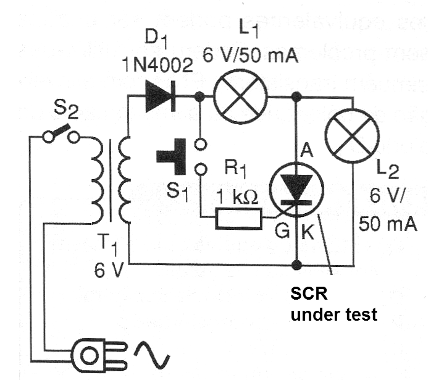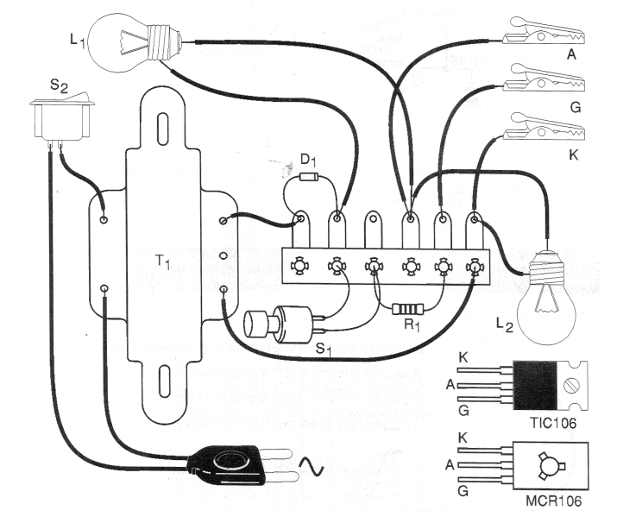In many of the assemblies described on this site and in other publications, we make use of SCRs of the 106 series (TIC106, MCR106, C106, etc.).
Knowing if one of these SCRs is in good condition is something that can bring some kind of concern if the reader does not have the appropriate instrument.
For knowing if one of these components is in good condition, we describe a simple tester whose diagram is shown in Figure 1.

The circuit uses two 6 V bulbs as indicators and is simple to use: simply connect the SCR to the circuit and observe the bulbs.
If you do this, the L1 lamp comes on at maximum brightness and L2 is off then the SCR is shorted.
If both lamps remain lit and when S1 is pressed, nothing happens, the SCR is open.
For a good SCR, when pressing S1 the L2 lamp goes off and L1 on.
The assembly of this tester on a wire and clamp terminal bridge to connect the SCR is shown in Figure 2.

We note that other higher power SCRs, such as those in the TIC series for 6 or more amps, cannot be tested by this circuit because they need a higher triggering current than that supplied, when S1 is pressed.
D1 - 1N4002 - silicon diode
SCR - SCR in test - TIC106 or equivalent with any suffix - see text
L1, L2 - 6 V x 50 to 100 mA bulbs
T1 - Transformer with a primary according to the local power grid and secondary of 6 V x 200 to 500 mA
S1 - Pressure switch
R1 - 1 k ohms x 1/8 W - resistor - brown, black, red
Miscellaneous:
Power cord, assembly base, terminal bridge, wires with claws, welder, etc.



